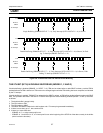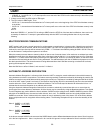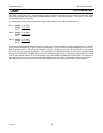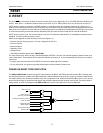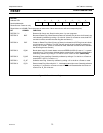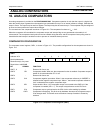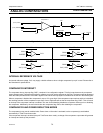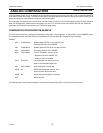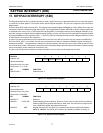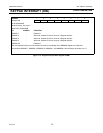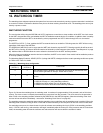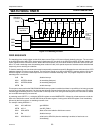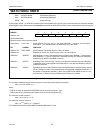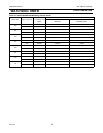
Philips Semiconductors
User’s Manual - Preliminary -
P89LPC906/907/908
ANALOG COMPARATORS
2003 Dec 8 75
If the comparator output to a pin is enabled, the pin should be configured in the push-pull mode in order to obtain fast switching
times while in power down mode. The reason is that with the oscillator stopped, the temporary strong pullup that normally occurs
during switching on a quasi-bidirectional port pin does not take place.
The comparator consumes power in Power down and Idle modes, as well as in the normal operating mode. This fact should be
taken into account when system power consumption is an issue. To minimize power consumption, the user can disable the
comparator via PCONA.5 or put the device in Total Power down mode.
COMPARATOR CONFIGURATION EXAMPLE
The code shown below is an example of initializing the comparator. This comparator is configured to use the CMPREF inputs.
The comparator output drives the CMP pin and generates an interrupt when the comparator output changes.
CMPINIT:
MOV PT0AD,#030h ; Disable digital INPUTS on pins that are used
; for analog functions: CIN, CMPREF.
ANL P0M2,#0CFh ; Disable digital OUTPUTS on pins that are used
ORL P0M1,#030h ; for analog functions: CIN, CMPREF.
MOV CMP1,#024h ; Turn on comparator and set up for:
; - Negative input from CMPREF pin.
; - Output to CMP pin enabled.
CALL delay10us ; The comparator has to start up for at
; least 10 microseconds before use.
ANL CMP1,#0FEh ; Clear comparator interrupt flag.
SETB EC ; Enable the comparator interrupt. The
; priority is left at the current value.
SETB EA ; Enable the interrupt system (if needed).
RET ; Return to caller.
The interrupt routine used for the comparator must clear the interrupt flag (CMF1 in this case) before returning.



